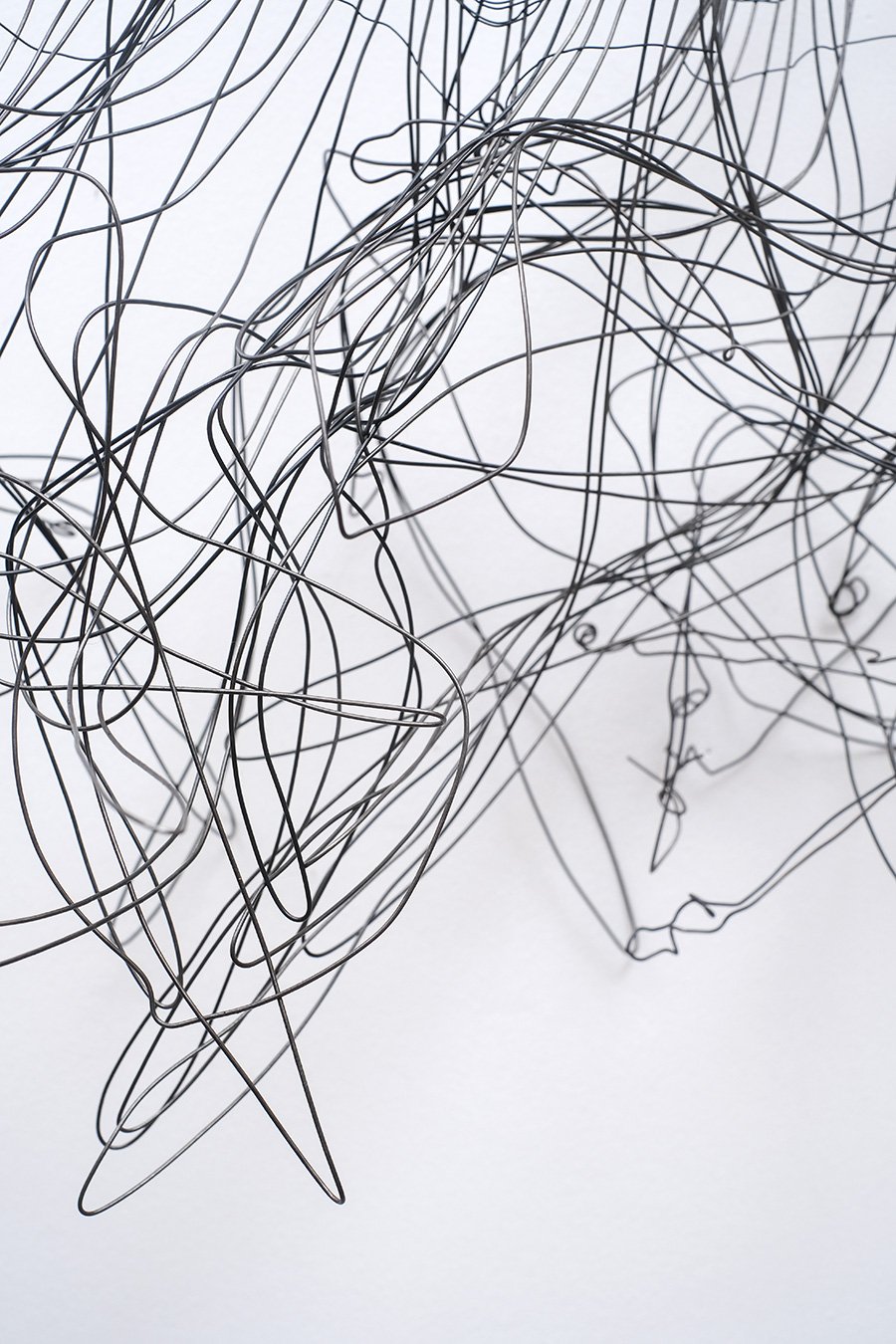Artist, writer and ccbc member, Amy Gogarty reflects on her experience viewing Amanda Wood’s gallery show INTERWOVEN. Amy breaks down the elements within Amanda’s installation and likens it to a scientific exploration. She further reflects on how Amanda has provided a fresh understanding of cloth and a nuanced way of viewing material within the confines of the gallery. INTERWOVEN is on view in our gallery until August 19, 2021.
Amanda Wood is best known for her luxurious handwoven scarves and large-scale sculptural installations in which handwoven fabric is stretched and draped to suggest architectural forms. Her exhibition Interwoven comes as a slight surprise in that it features images and sculptures of cloth rather than actual cloth. The artist describes the installation as “a multi-sensory experience of the ways cloth mediates care and time.” While the sensory experience is constrained—all works are executed in shades ranging from white to grey and most are confined to two dimensions—repeated images and symbolic representations of cloth speak to the role of textiles in our daily lives.
“The impression overall is of a scientific display in which specimens are pinned up for consideration“
The installation consists of thirty-four objects and images; objects sit on small white shelves cantilevered from the wall, and images float against white expanses within white frames. The arrangement of shelves and frames on the wall constitutes a loose grid in which several elements are shifted out of alignment. The impression overall is of a scientific display in which specimens are pinned up for consideration, an effect reinforced by the identical white frames, white shelves, and a white-lined horizontal vitrine containing three-dimensional objects.


The elements of the installation fall into five categories:
- Photocollage images of a terrycloth rag manipulated into a variety of expressive poses. The image of the rag has been cut from its background and floated across a white field. The isolation of the image gives it an iconic appearance, which emphasizes the rich texture of the cloth. One can almost feel it caressing the skin. These are titled soft form alphabet I through VII.
- Photogram images of loosely woven cloth–cheese cloth or tarlatan, the stiffened cloth used to wipe etching plates–and translucent fabric, which appears to be material used for silk screens. The photograms render the cloth bright white against a nearly black background. The loosely woven cloth floats across the frame like a ghost, while the silk screening falls in voluptuous folds recalling bodies or landscape. Unlike the photocollages, the photograms are titled with evocative phrases that imply physical states (excited but sleepy) or gestures (a repeating thought implying motion).
- Collagraphs constructed from handmade paper with images embossed by garment factory waste. These are exceedingly subtle, and only by looking closely can one discern the white-on-white impressions that mark them. Titles are similarly poetic and fragmentary: a touch that never went away; only part of the story.
- Small, gestural sculptures made from folded slabs of unglazed porcelain, which sit on the cantilevered shelves. The porcelain bears the trace of the canvas on which it was formed, reinforcing its resemblance to cloth. Titles to these works–a suggestion of soft form in use I through V—establish slightly perplexing links between the sculptures and photocollages.
- The fifth category is heterogeneous and includes woven wire sculptures, a found object, a tiny rectangle woven from paper thread, and a small mat of woven porcelain. Six of these objects, titled studio object I through VI, form a mysterious collection contained within the vitrine, where they are presented like evidence.


The objects arranged on the wall are not ordered according to category, but, rather, are interspersed such that each appears to comment on or modify its neighbor. Each is a clue to a narrative unfolding in three dimensions, like cloth unfurling in a breeze. Wood has noted her interest in language, which is apparent in her evocative titles. Like clues, the titles are fragments, which only gain meaning in relationship to the whole. The arrangement activates memories of cloth, something so familiar, so proximate, it is often overlooked. In shifting the representation, the artist shifts our gaze; de-familiarizing the cloth, she makes us experience it anew.
As a weaver, Amanda Wood sets threads in precise relationship to each other to construct cloth, something that is both similar to and yet completely different from its constituent components. In setting these translated representations of cloth in precise relationship to each other, she constructs meanings that extend beyond the individual works. Interwoven draws on memory and imagination to evoke a poetic response.
Amy Gogarty taught histories and theories of visual arts and ceramics at ACAD, now AUArts, in Calgary for sixteen years prior to relocating in 2006 to Vancouver, where she works as an independent researcher, artist and writer. She is a maker of functional and sculptural ceramics and the author of over one hundred critical essays, reviews and presentations relating to visual art and craft practice. She sits on the Board of the North-West Ceramics Foundation and is a passionate supporter of ceramics in British Columbia. In 2021, she was named an Honorary Member of NCECA, the National Council on Education in the Ceramic Arts.

